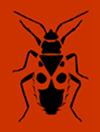Differences in the behaviour of model and non-model species of ants in interactions with the pod-sucking myrmecomorphic bug, Riptortus linearis (Hemiptera: Alydidae)
IF 1.2
3区 农林科学
Q2 Agricultural and Biological Sciences
引用次数: 0
Abstract
Ants are common invertebrate models of many myrmecomorphic arthropods since they are unpalatable and pose a threat for many species. Natural habitats harbour a diverse community of different species of ants and their mimics. The myrmecomorphic bug, Riptortus linearis uses a variety of extrafloral nectary-bearing or hemipteran-harbouring legumes as host plants, which are also visited by various sugar-loving species of ants. In the present study, we investigated the responses of the ant-mimicking and non-mimicking stages of the pod-sucking bug, Riptortus linearis, its ant model, Camponotus compressus and a co-occurring ant, Crematogaster subnuda, during experimental encounters, under laboratory conditions. Cr. subnuda ants were much more aggressive than Ca. compressus ants towards the myrmecomorphic bug. However, the pod-sucking bug exhibited similar responses to both of the species of ants. More importantly, Ca. compressus ants did not bite the first instar nymph of the bug. The results of this study show that the non-model ant was significantly more aggressive than the ant model towards different stages of R. linearis. These results have important implications for the management of the pod-sucking bug, R. linearis, which is an important pest of many legumes.模式种和非模式种蚂蚁与吸血蚁形虫Riptotus linearis相互作用时的行为差异(半翅目:蚁科)
蚂蚁是许多蚁形节肢动物的常见无脊椎动物模型,因为它们令人不快,对许多物种构成威胁。自然栖息地栖息着由不同种类的蚂蚁及其模仿物组成的多样化群落。myrmemorphic虫Riptotus linearis使用各种带蜜腺或半翅目的豆科植物作为寄主植物,各种喜糖的蚂蚁也会造访这些植物。在本研究中,我们在实验室条件下,研究了吸血虫Riptotus linearis、其蚂蚁模型Camponotus compressus和同时出现的蚂蚁Crematoaster subuda在实验遭遇过程中的反应。Cr.subuda蚂蚁比Ca.compressus蚂蚁更具攻击性。然而,这种吸荚虫对这两种蚂蚁表现出相似的反应。更重要的是,卡氏压缩蚁没有叮咬该虫的一龄若虫。本研究的结果表明,非模型蚂蚁对R.linearis的不同阶段明显比蚂蚁模型更具攻击性。这些结果对许多豆科植物的重要害虫——吸荚虫R.linearis的管理具有重要意义。
本文章由计算机程序翻译,如有差异,请以英文原文为准。
求助全文
约1分钟内获得全文
求助全文
来源期刊
CiteScore
2.30
自引率
7.70%
发文量
43
审稿时长
6-12 weeks
期刊介绍:
EJE publishes original articles, reviews and points of view on all aspects of entomology. There are no restrictions on geographic region or taxon (Myriapoda, Chelicerata and terrestrial Crustacea included). Comprehensive studies and comparative/experimental approaches are preferred and the following types of manuscripts will usually be declined:
- Descriptive alpha-taxonomic studies unless the paper is markedly comprehensive/revisional taxonomically or regionally, and/or significantly improves our knowledge of comparative morphology, relationships or biogeography of the higher taxon concerned;
- Other purely or predominantly descriptive or enumerative papers [such as (ultra)structural and functional details, life tables, host records, distributional records and faunistic surveys, compiled checklists, etc.] unless they are exceptionally comprehensive or concern data or taxa of particular entomological (e.g., phylogenetic) interest;
- Papers evaluating the effect of chemicals (including pesticides, plant extracts, attractants or repellents, etc.), irradiation, pathogens, or dealing with other data of predominantly agro-economic impact without general entomological relevance.

 求助内容:
求助内容: 应助结果提醒方式:
应助结果提醒方式:


